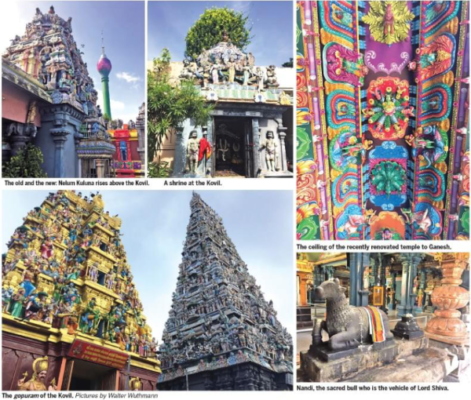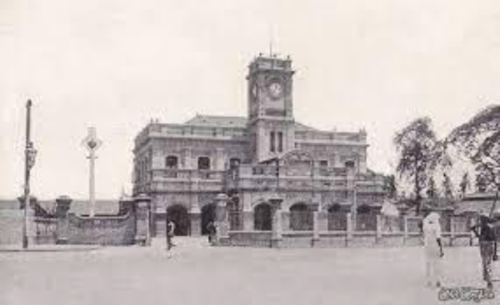Mariyakadey

The place name Mariyakaday in Maradana has, over a period of time covering at least three centuries, acquired a dubious reputation or notoriety similar to that of London’s fish market which gave to the English vocabulary the
word “Billingsgate” meaning foul and abusive language.
At first glance the name appears to have connections with the Christian religion and the Roman Catholic church with its reference to Mary or Maria the mother of Jesus. But to trace its origin it is necessary to go back three centuries to a time when Colombo city (except for the present day Pettah and the west end of the Fort) was a vast water- logged area which took the name Beira, meaning “swamp” in Portuguese. In this scenario there was no MaCallum Road (D. R. Wijewardana Mawatha), Fort Railway Station, Lake House, Lotus Road, Olcott Mawatha (earlier known as Norris Road).
All these formed a part of the Beira. Between the Pettah and the hinterland was a small elongated island (later
called Captain’s Garden). …. This must not be confused with the other large island in the lake which, during the Dutch occupation, was declared by plakaart the nocturnal quarters of slaves brought to Ceylon from Mozambique and East Africa to work in the residences of Dutch officials. Here in Captain’s Garden was constructed a Hindu Pillaiyar kovil which served the adherents of the Hindu religion residing in the sparsely populated area of this part of Colombo known as the Maran-stan (Tamil for “place of trees”) Maran-dhan or Maradana. The worshippers came, to Captain’s garden kovil on rafts or in small open boats. But during the period when the monsoonal flooding had eased, the approach to the island shrine was fordable up to Suduwella (so named later because of the grey-white sand thrown up during the construction of the railway in the 1860’s. This lake (or river sand) covered part of the terrain. From here, across the area where the Olympia cinema was later built, the pathway led to the site of the present public market where Mariyakaday is situated – the distance being about a quarter of a kilometer, as the crow flies.

It will be necessary to disabuse our minds of the present-day connotation of the word “kaday” With its implications of a buying and selling market – place (it is good to remember that Kochchikaday and Aluthkaday have no such implications.) A kaday can also mean an enclave or a meeting place or caravanserai or resting place on a pilgrimage.
Complementary shrines are known to be situated in close proximity to important Hindu kovils and temples. There are Mariamman Hindu shrines in Kotahena, Kandana, on the east coast near Batticaloa, Kalmunai and in other locations. The best-known is the Muthu-Mariamman kovil in Matale town with its imposing gopuram. The Pillaiyar kovil is on the parallel road a short distance away. Mariamman can mean symbolically the fertility mother-goddess
of rain and harvest. In this particular temple in Matale, Mariamman has connection with goddess Paththini whose shrines have been constructed all over Sri Lanka for over a thousand years from the time of King Gaja Bahu (AD113 114). Here the story of Kovalan and Kannaki as related in the Tamil epic Chilapathiharam has contributed to the dedication of numerous shrines for Paththini worship both by Hindus and Buddhists. It is very likely that one such shrine could have been the Mariyakaday or place where believers congregated on their way to and from the Pillaiyar kovil between Captain’s Garden and Maradana.
However, whichever way one looks at it, there is no likelihood that Mariyakaday was at any stage the market or boutique of a woman named Maria. It might be relevant to mention that although the theological divergences
that exist in the Catholic faith with it’s belief in the powerful intercession of Mary the mother of Jesus through the reverence of hyperdulia (as opposed to Mariolatry which is the extreme form of veneration) – and the Hindu religion with its cult of Kali and Uma (the Mother -goddess) and the Paththini cult which is a later off-shoot of this belief on the lines of the ancient Greek rites for Persephone, daughter of Demeter the goddess of crops and fertility – there are outstanding parallels and similarities which cannot be ignored.
Fredrick MendisVice President Royal Asiatic Society, President Royal
Commonwealth Society – Daily Mirror Thu Oct 4 2007
My note:
Mari in Tamil means rainy season.
Mari Amman is possibly a reference to a rain goddess and not to Mary.
-Mano







